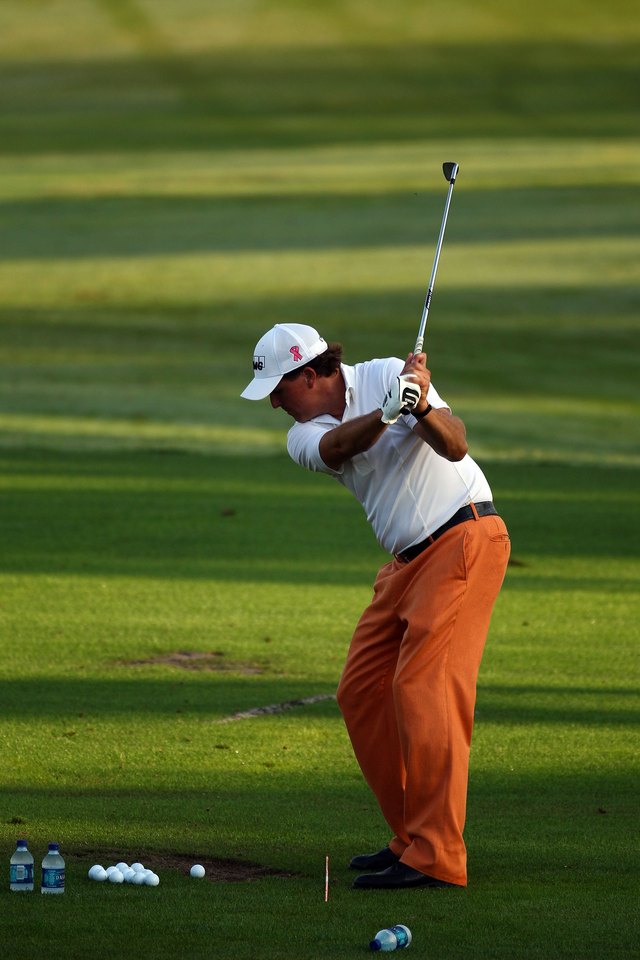What Is the Standard Loft of a Pitching Wedge?

The pitching wedge is the least-lofted club in the wedge family but still contains more loft than any non-wedge golf club. As the name suggests, pitching wedges are used primarily to hit pitch shots, which are relatively short approach shots designed to travel high in the air and land softly on the green, as close to the hole as possible. It’s important to know the lofts of your clubs so you can choose the right club during a round of golf.
Loft
A golf club’s loft is a measurement of the angle between the shaft and the clubface. The driver is typically the least-lofted club. The loft contained by a wood, hybrid or iron increases as the club’s number increases -- in other words, a 7-iron has more loft than a 4-iron. With respect to wedges, the pitching wedge contains the least loft, with the gap, sand and lob wedges containing progressively greater amounts of loft. All else being equal, it’s easier to hit the ball in the air with a higher-lofted club, but the ball won’t travel as far.
Pitching Wedge Loft
A typical pitching wedge contains about 45 degrees of loft. By comparison, the highest-lofted iron, the 9-iron, contains approximately 41 degrees of loft, while the gap wedge is typically lofted at 50 degrees. There is, however, no industry standard regarding each club’s loft. Some manufacturers will build pitching wedges with more or less than 45 degrees of loft. Additionally, club fitters can usually bend a club to increase or decrease its loft.
History
The pitching wedge was once golf’s only wedge. Before the invention of the sand wedge, players used pitching wedges to hit from bunkers. Indeed, the first sand wedge, built by golfer Gene Sarazen in 1931, was actually a modified pitching wedge. Through much of the 20th century pitching wedges contained about 50 degrees of loft. Because manufacturers decided that players wanted more distance, many clubs -- including pitching wedges -- were gradually de-lofted, beginning around the 1970s. It was only when the pitching wedge crept toward the 45-degree mark that the gap wedge was invented, to literally fill the gap between the pitching wedge and the sand wedge, which is typically lofted around 55 degrees.
Use
Professional male golfers can typically hit pitching wedges around 130 to 135 yards. An amateur player is more likely to hit the ball around 100 yards. The club is commonly employed on the fairway or from the rough when the ball is close to the green. Some players may use pitching wedges from fairway bunkers if the sand is firm or if they have a good lie.
References
Writer Bio
M.L. Rose has worked as a print and online journalist for more than 20 years. He has contributed to a variety of national and local publications, specializing in sports writing. Rose holds a B.A. in communications.
